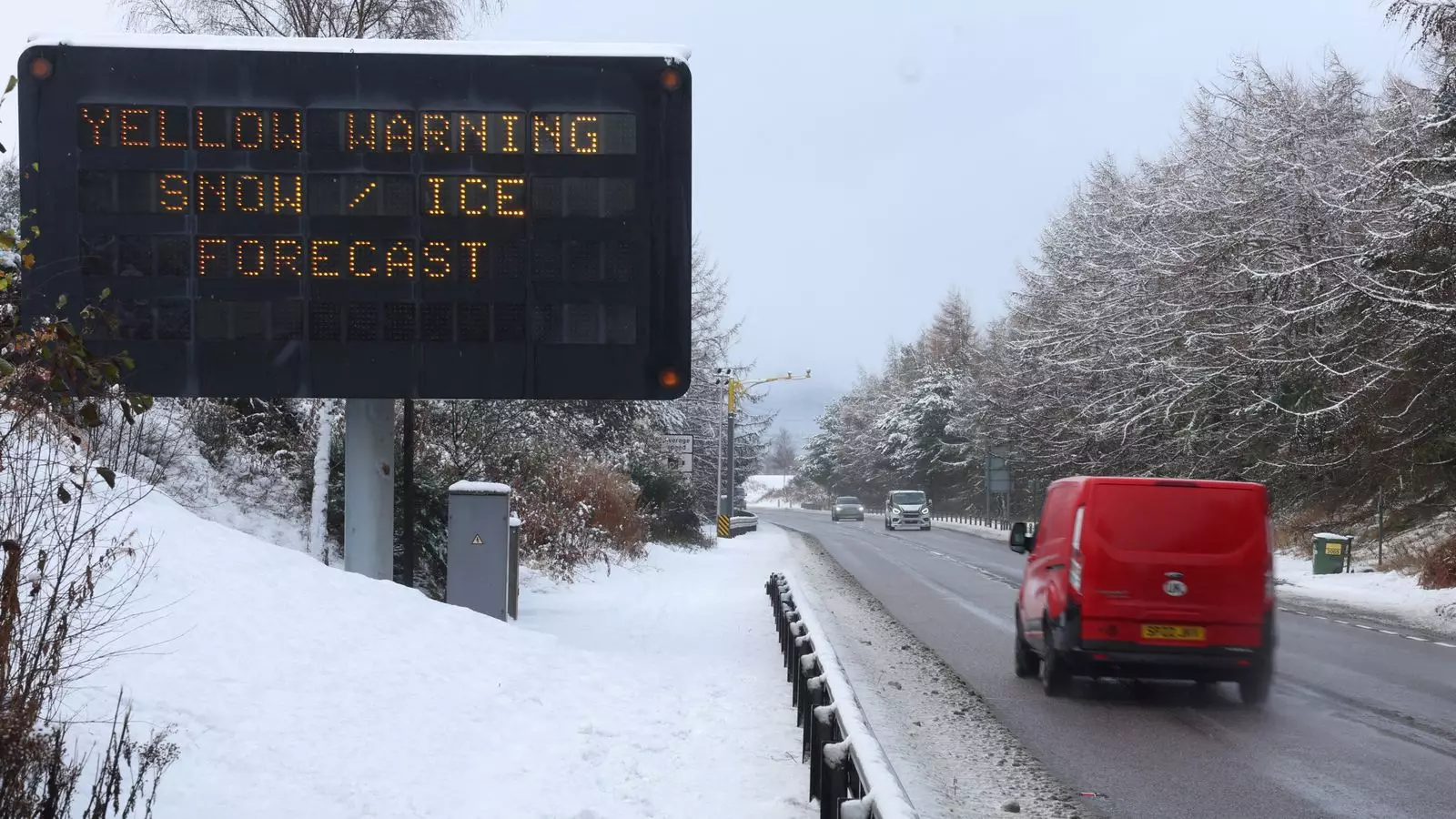Storm Bert wreaks havoc across the United Kingdom, bringing with it a cocktail of severe weather conditions including snow, rain, and strong winds. With multiple weather alerts in effect, the disruption to travel plans is palpable, and the looming threat of flooding raises concerns for residents in various regions. The response from the authorities reflects a growing urgency as they prepare for a “multiple hazard event” that could exacerbate existing challenges.
As Storm Bert approached, the UK Met Office rolled out numerous weather warnings covering a large swath of the country. Yellow warnings were issued, suggesting that individuals should remain vigilant due to the likelihood of disruptions, particularly in travel. However, it was the amber warnings that commanded more attention, especially for areas in northern England and central Scotland where the impacts could be significantly more severe. In a rare move, certain regions of Ireland received a red warning, indicating life-threatening conditions due to heavy rains.
In England and Scotland, 16 flood alerts were activated, serving as notifications to residents about potential flooding risks. These warnings not only highlight the immediate dangers but also cast a shadow over plans for upcoming events, as seen in Perth and Kinross, where the annual Christmas lights switch-on was canceled due to safety concerns.
The storm’s severity translates into tangible disruptions on infrastructure. National Highways issued a “severe weather alert,” particularly for regions like Yorkshire and northeastern England, which were subject to heavy snow accumulations. Major roadways, such as the A628, experienced closures, preventing safe passage for travelers. Notably, the A66 Trans-Pennine route was compromised as well, further highlighting the challenges faced by motorists.
While airports managed to steer clear of considerable disruptions, rail travel encountered its own set of hurdles. Companies like ScotRail announced schedule changes and service withdrawals for several lines, making it clear that the storm had far-reaching implications. The TransPennine Express went a step further and advised its customers to reconsider their travel plans, particularly for routes heading north of Carlisle, signaling an urgent need for passengers to heed safety warnings.
Meteorologist Aidan McGivern provided a dire forecast as the storm approached, marking the onset of significant weather changes. His mention of two to four hours of heavy snowfall across northern England and Scotland paints a grim picture for travelers and families alike. The expected accumulation ranged from 5 to 10 centimeters in lower areas, escalating to a staggering 20 to 40 centimeters in higher altitudes. This forecast raised fears of blizzards, which could make any kind of outdoor travel virtually impossible, further straining emergency response resources.
However, as the storm moved in, the storm system’s milder air from the Atlantic indicated a swift temperature increase. This juxtaposition created a rapid thaw by the afternoon, altering the landscape yet again and leading to concerns over melting snow that could contribute to flooding risks.
In light of the extreme conditions, understanding what each weather warning entails becomes crucial. The yellow warnings are advisories for individual foresight, while amber warnings signal a need for more serious consideration of travel plans. Red warnings, albeit rare, serve as high-alert indicators that can pose life-threatening conditions. These categorizations are essential for the public to take informed steps to protect themselves and navigate the onslaught of Storm Bert effectively.
Ultimately, as the storm wreaks its havoc across various regions, the consequences ripple through communities and transportation systems. Preparations and safety measures become paramount, as individuals must stay informed and consider the potential impact of weather on their lives. As the storm subsides, the focus will shift towards assessing the damage and implementing recovery measures, underscoring the shiftability and resilience required in facing nature’s unpredictability.


Leave a Reply